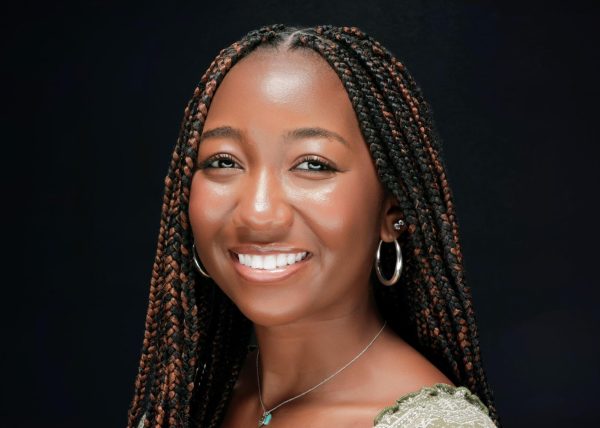From “Knives Out” to “Gone Girl”: The centering of women in the mystery genre
Twentieth Century Fox, CBS, Lionsgate, Netflix
In the older eras of mystery movies and television shows, stories tended to center around male crime solvers and villains. Now, as the entertainment industry increasingly invites stories centered around women and their feats, the category becomes in touch with its feminine side.
January 31, 2023
The suspense-inducing scenes that mimic horror films, coupled with the wit and charisma of characters frequently featured in comedies, mystery films and television shows stand as an enigma on the silver screen. These types of projects garner the ability to keep audiences restless and paranoid while feeding them jokes and one-liners that keep them engaged. The true tension in mystery flicks stems from their ability to keep people on their toes. In a world where any lingering glance, passion-fueled monologue or innocent movement in the background could mean something, these particular pictures become a mind game—one that fans so eagerly play. The power of mystery movies and shows relies on their capacity to put the viewers in the driver’s seat so that they share that same sense of accomplishment with Sherlock Holmes or Benoit Blanc when the credits roll. While the lion’s share of mystery flicks feature men as the titular characters or snarky sleuths, in recent iterations of the classic genre women, notably, women of color, now own increasing capital in the thrilling classification.
Knives Out/ Glass Onion
In 2019, mystery movies experienced a jolt with the release of Knives Out, a slapstick, eye-catching thriller tied together with murder, created by filmmaker and director Rian Johnson, who also authored the film. The movie follows world-renowned detective Benoit Blanc, portrayed by Daniel Craig, visiting the home of crime novelist Richard Drysdale, portrayed by Don Johnson, to investigate his ill-timed passing. Throughout the film, along with Blanc, the audience meets those nearest and dearest to the late wordsmith, including his registered nurse Marta Cabrera, played by Ana de Armas. In the movie, de Armas’ character works closely with Blanc to investigate the crime, which leads to the demise of one of her former employers’ family members. A similar pattern ensues in the sequel film in the franchise, “Glass Onion: A Knives Out Mystery,” which released on Netflix in 2022. While the story still features the character of Beniot Blanc, it follows a secluded vacation of a group of friends during the COVID-19 pandemic. In the Marta Cabrera-esque role in this film, Janelle Monáe portrays Helen Brand, who aimed to avenge the murder of her sister Andi, at the hands of one of her former confidants. In both films, both Marta and Helen sit as outsiders to the rest of the ensemble cast. Whether through alienation or social class, their positioning in the cliques allows them a unique perspective for finding the root of a crime. By utilizing their quirks —Marta’s lying-induced puking and Helen’s reckless abandon caused by intoxication— and sleuthing skills from Detective Blanc, both women end their respective films as the last ones standing. Both characters exist as integral to the case as a whole. As women of color, the irony of Marta and Helen taking down the white men that wronged their loved ones stands as powerful to audiences.
“I think women bring a unique perspective to mystery, like in Glass Onion. The rage seen by Helen at the end was really like a defining part of the movie for me, and her whole plan throughout was so complex and I think it was made more so than it would’ve been had the character been a man. And in Knives Out, I thought Marta’s emotions were really unique and it was easy to relate to her more because she was a woman and that made me enjoy it,” senior Madeline Shell said.
Elementary
A pinnacle of the mystery genre lies in the trench coats and deductive reasoning skills of Sherlock Holmes, the British fictional detective. Since the role’s inception in 1892, literary and cinematic retellings of the figure also feature Holmes’ sidekick– the intelligent former surgeon Dr. John Watson. Commonly portrayed by white, English actors, 21st-century reenactments of the characters maintained that demographic when recounting the daring tales of mischief and transgressions on the Victorian London streets. However, in recent iterations, the virtuous Watson experienced a diversification. Himesh Patel, a British actor of Indian Gujaratis descent, portrayed the character in “Enola Holmes 2”, a sequel to the Netflix original that featured Henry Cavill as the stoic Hackshaw. In 2012 though, the role received a revamp in race and gender, through Taiwanese-American actress, Lucy Liu, in the hit CBS program, Elementary. The on-screen veteran portrayed Joan Watson, a former surgeon who became the sobriety sponsor turned consulting detective alongside English detective Sherlock Holmes, played by Jonny Lee Miller. In reenactments of the crime-solving duo, Watson acts like a foil for Holmes: where the latter broods, the former serves as a drawing board for their ideas. While the tale of the Americanized Watson began with her as a student, her foil expanded as the seasons progressed. The medical expertise from her former career in healthcare integrated accompanied by the skills learned under Holmes allowed Joan a unique outlook on crime, and the methods of solving complex cases. The uniqueness of Joan Watson stems from her ability to grow alongside Sherlock Holmes– instead of falling prey to the sidekick archetype, her character development allowed her to become recognizable without leeching onto the notoriety of Holmes. Liu also directed six episodes of the show. In an article for the online entertainment publication Pajiba, author Kayleigh Donaldson lauds the impact of Joan Watson– and in turn, Liu– harbored in regard to representation on screen.
“Liu has begun working behind the camera, directing several episodes, and off-screen, she’s expanded her work as an artist, (which is really beautiful, and you should definitely check out her website). Liu seems to have found a niche that suits her and one that lets her do the thing she’s best at. Progress has been made with Asian representation on American TV but it’s still mostly happening in drips, meaning that Liu, as she was almost 20 years ago, remains one of the most visible Asian women on the small screen. Her appeal endures, but the entertainment world’s inability to get that remains frustratingly in place. But we’ll always have Joan Watson, and she makes everything better,” Donaldson said.
Gone Girl
The 2014 film adaptation of the novel “Gone Girl” acts as a subversion of the common reputation surrounding villains in mystery films. Starring Ben Affleck as concerned husband Nicholas Dunne, and Rosamund Pike as Amy Dunne, his missing wife, the film take audiences on a journey through her disappearance, their secrets and the path that led her to plan her own murder– and pin it on him. The beginning of the film paints the picture for audiences of Nicolas and Amy’s seemingly blissful marriage, but as time and the movie progress, viewers come to find that life in the Dunne residence subverts their positive perception. The real story of the film lies with the titular gone girl, Amy, and progressively shows how she meticulously planned her kidnapping and death in order to make her husband pay for his errors. To Amy, her plan was validated through her festering feelings of desperation towards the box her marriage forced her into. The Dunne’s marriage consisted of Nicholas acting as himself, and Amy putting on a performance. In the infamous “cool girl” monologue delivered by Amy during the middle of the film, she laments the ways in which she shifted her personality and actions in order to please her husband. As chilled and apathetically as the trope implies, Mrs. Dunne pursues her plan, no matter the obstacles, by any means necessary. For viewers, the methods of Amy’s plan still stand as controversial in the near-decade since the film’s release. The feelings of empathy and controversy that Amy engendered throughout audiences prove her success as a female villain– regardless of the malintent, watchers of the film cannot help but root for the evil genius arc until the bitter end.
On the sides of good and bad, the rising role of women in the mystery film genre continues to shift and change the genre, while maintaining the elements of their 20th-century, male-dominated predecessors. For a film category successful for its suspense, it comes as no surprise how stories centered around women solving or committing crimes continue to amaze viewers.







